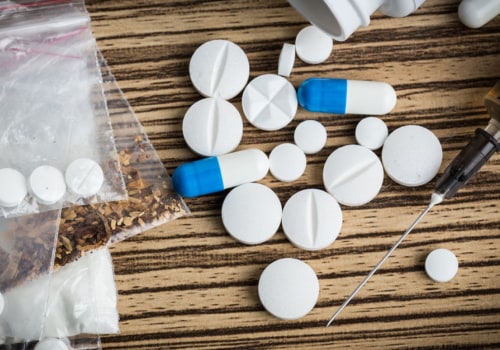Alcohol and drug addiction occurs in the best of families Describe how alcohol and drug addiction affects the entire family. It explains how substance abuse treatment works, how family interventions can be a first step to recovery, and how to help children in families affected by alcohol and drug abuse. Addiction affects the brain on many levels. The chemical compounds in stimulants, nicotine, opioids, alcohol, and sedatives enter the brain and bloodstream when used.
Once a chemical enters the brain, it can cause people to lose control of their impulses or to want to consume a harmful substance. We've learned a lot over the past few decades, including the idea that addiction can come not only from substance abuse, but also from behaviors such as sex and eating. Addiction can also cause emotional hazard detection circuits to accelerate, leaving you feeling anxious and stressed when you don't use drugs or alcohol. You may need the help of your doctor, family, friends, support groups, or an organized treatment program to overcome your drug addiction and stay drug-free.
Teachers, parents and health care providers play a crucial role in educating young people and preventing drug use and addiction. Scientists once believed that the experience of pleasure alone was enough to encourage people to continue searching for an addictive substance or activity. Addictive drugs provide direct access to the brain's reward system by flooding the nucleus accumulbens with dopamine. People continue to take drugs to support the intense emotions of well-being released by the brain; this creates a cycle of drug use and intense high.
The results of NIDA-funded research have demonstrated that prevention programs involving families, schools, communities and the media are effective in preventing or reducing consumption and addiction to Drugs and addictive behaviors provide a shortcut and flood the brain with dopamine and other neurotransmitters. Perhaps the best approach to substance abuse prevention is a clear and concise understanding of the addiction process and the effects it can have on the user. As with most other chronic conditions, such as diabetes, asthma, or heart disease, treatment for drug addiction is generally not a cure. Repeated exposure to an addictive substance or behavior causes nerve cells in the nucleus accumulbens and the prefrontal cortex (the area of the brain involved in planning and executing tasks) to communicate in a way that combines taste with desire, which in turn drives us to pursue it.
Through an extensive study of addicts and what motivates them, science has reduced the behaviors and traits that are symptoms of addiction. Variables such as genetics (more on this later), peer pressure, existing psychological disorders, anxiety and depression, and the quality of a person's family life can lead them to become addicted to a substance or behavior. They may mistakenly think that those who use drugs lack moral principles or willpower and that they could stop using drugs simply by choosing to do so. Substance use disorders are the result of changes in the brain that can occur with repeated use of alcohol or drugs.






